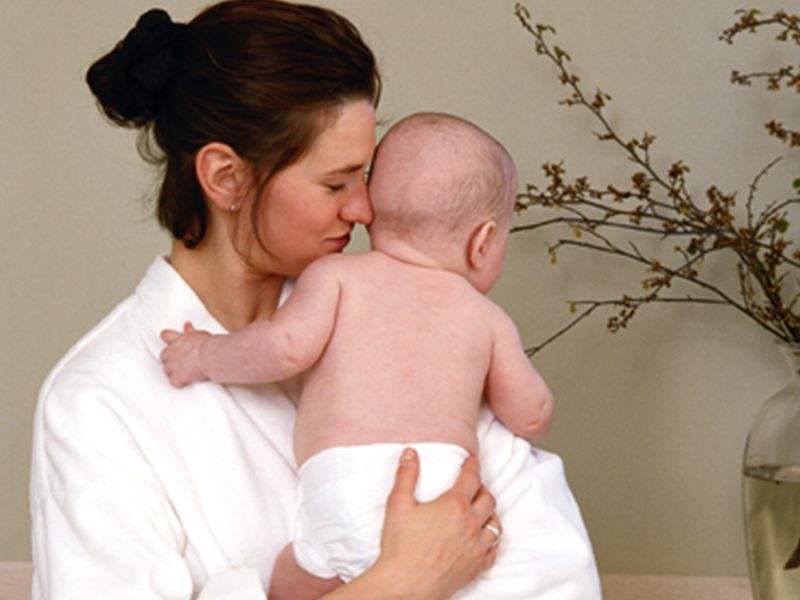

Teen Birth Rate Drops Again to All-Time Low: CDC
Preterm deliveries and births to older moms are up, report findsFriday, June 30, 2017

FRIDAY, June 30, 2017 (HealthDay News) -- Teen births in the United States dropped to a record low last year, falling 9 percent from 2015, U.S. health officials reported Friday.
The overall birth rate declined, too, dropping 1 percent between 2015 and 2016, according to preliminary data from the U.S. Centers for Disease Control and Prevention. The total number of births in 2016 was 3,941,109.
Moreover, the fertility rate declined to 62 births per 1,000 among women of childbearing age -- a record low for the nation, researchers found.
Births among 15-to 19-year-olds have declined dramatically since 2007 -- more than 50 percent, said lead researcher Brady Hamilton, a statistician at CDC's National Center for Health Statistics.
"It's really quite astounding for a demographic rate in an age group to decline that much," he added.
The teen birth rate was 20.3 births per 1,000 female teens in 2016, compared to 41.5 births per 1,000 in 2007, according to the report.
The falloff in teen motherhood is a plus because teenagers are less likely than adults to have good prenatal care, and they have a higher risk of pregnancy complications, said Dr. Paul Jarris, deputy medical officer at the March of Dimes.
Teen moms also often experience poverty and loneliness, and lose out on educational opportunities -- hurdles that can pose health risks for mother and child, added Jarris, who wasn't involved in the research.
He said more teens are using long-lasting birth control, such as implants and intrauterine devices (IUDs), which make unintended pregnancy less likely.
The CDC report isn't all rosy, however. Both preterm births and low birthweight babies increased, the researchers noted.
Preterm births climbed for the second year, increasing 2 percent from 2015 to 2016. Preemies accounted for almost 10 percent of births last year, Hamilton said.
Whether this is a blip in the data or a continuing trend isn't clear. "Only time will tell," Hamilton said.
The rising rate of preterm births is the most disturbing finding in the report, said Jarris.
"For seven years, we had improvements in preterm births in this country, and now after years of improvement we are getting worsening conditions for moms and babies," he said.
Preterm birth and its associated conditions are the largest killers of children up to age 5 worldwide, Jarris said.
Children born preterm don't have fully developed brains or lungs, he explained. This can lead to immediate problems of breathing and temperature control. It can also mean learning and developmental problems that last a lifetime, he said.
Fortunately, many preterm babies go on to be just fine, Jarris said.
The rise in preterm births is probably due to many factors, including lack of prenatal care, Jarris said.
He expressed concern that earlier reports showed the increase in preterm births was among black and Hispanic women.
"So not only are we getting worse as a nation, we are getting less equitable as a nation," Jarris said.
"We really feel that when a baby is born, the race or ethnicity of the mom should not determine their chances for survival, and unfortunately, that's all too true in this country," he said.
Other highlights of the 2015-2016 CDC report:
- The birth rate climbed among women in their 30s and 40s, with births among 30- to 34-year-olds up 1 percent, to 102.6 births per 1,000 women, reaching their highest level since 1964.
- Births among unmarried women ages 15 to 44 dropped 3 percent in 2016, down to 42.1 births per 1,000 unmarried women.
- More than three-quarters of pregnant women started essential prenatal care in the first trimester. But 6 percent waited until the third trimester to get prenatal care or had no prenatal care.
- For the fourth year in a row, the number of cesarean deliveries declined slightly, falling to just below 32 percent of births. The rate of low-risk cesarean deliveries also dropped slightly.
For the report, CDC researchers used birth records for nearly 100 percent of the births in the United States in 2016.
SOURCES: Brady Hamilton, Ph.D., statistician, National Center for Health Statistics, U.S. Centers for Disease Control and Prevention; Paul Jarris, M.D., deputy medical officer, March of Dimes; June 30, 2017, NCHS report Births: Provisional Data for 2016
HealthDay
Copyright (c) 2017 HealthDay. All rights reserved.
News stories are written and provided by HealthDay and do not reflect federal policy, the views of MedlinePlus, the National Library of Medicine, the National Institutes of Health, or the U.S. Department of Health and Human Services.
- More Health News on
- Health Disparities
- Teenage Pregnancy




























.png)











No hay comentarios:
Publicar un comentario